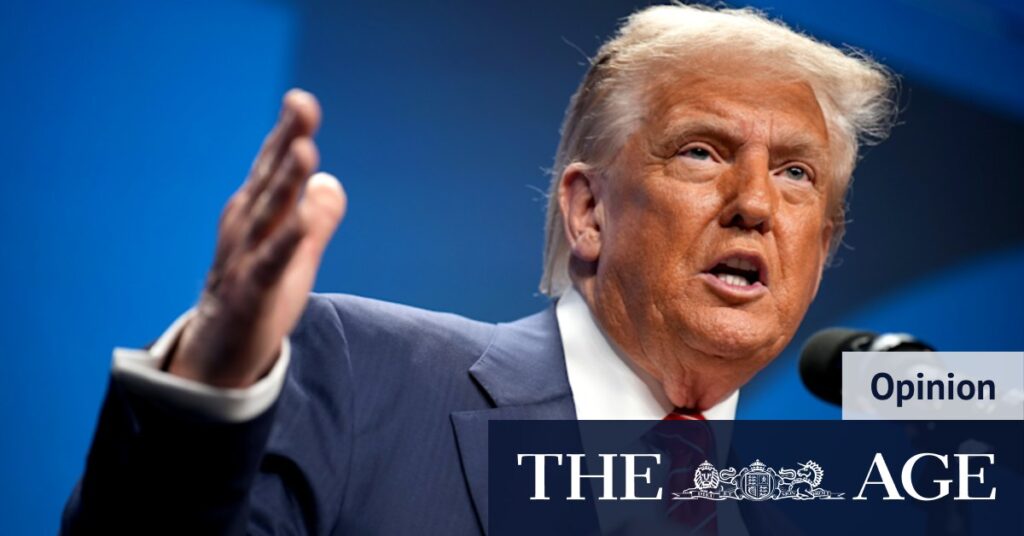
In a move that could significantly impact transatlantic relations, former President Donald Trump has reignited concerns over trade tariffs, placing Europe in the crosshairs of potential economic confrontation. The announcement comes as Trump considers raising the baseline tariff rate to 15 to 20 percent, with threats to impose a 30 percent tariff if retaliatory measures are taken by the European Union. This development follows months of negotiations between EU and US trade officials, as both parties attempt to navigate the complex landscape of international trade.
The backdrop to these tensions is a longstanding reliance of European nations on the United States for defense against an assertive Russia. Despite commitments to increase defense spending, it will take years for Europe to reduce its dependency on US protection. Meanwhile, Trump’s impatience grows, fueled by the successful passage of his One Big Beautiful Bill Act and the buoyant US financial markets, which have rebounded from previous sell-offs. Investors remain skeptical, with markets behaving as if Trump’s tariff threats are mere bluffs, a sentiment known as the “Trump Always Chickens Out” or TACO trade.
Market Reactions and Economic Implications
In April, Trump deferred the imposition of tariffs due to concerns over the bond market’s stability. However, with markets now settled and the sharemarket posting record highs, the August 1 deadline for reciprocal tariffs looms as a potential turning point. The apparent complacency in markets has emboldened Trump, who may opt for unilateral “take it or leave it” ultimatums rather than heed the advice of calmer voices within his cabinet.
The European Union, while hoping Trump’s threats are a negotiating tactic, has prepared countermeasures. A list targeting €21 billion ($37 billion) of US exports, including chicken, motorcycles, and clothing, is ready should the baseline tariff be enacted. Additionally, a secondary list targeting another €72 billion of products, ranging from aircraft to alcohol, could be deployed against reciprocal tariffs. The EU’s “anti-coercion instrument,” designed in response to cheap Chinese imports, remains a last resort.
The total trade between the US and EU is worth about $US1 trillion ($1.5 trillion), with the EU enjoying a trade surplus in goods of $US235 billion, but a trade deficit in services of about $US75 billion.
Strategic Responses and Future Outlook
The EU has sought exemptions from Trump’s tariffs for key sectors, such as aircraft and alcohol, in exchange for a promise to purchase more US goods, notably weapons and LNG. European Commission President Ursula von der Leyen has indicated the EU’s willingness to negotiate but has also prepared for possible retaliation. Imposing 30 percent tariffs on EU exports could disrupt critical supply chains, impacting businesses and consumers on both sides of the Atlantic.
Trump’s view of the EU’s non-tariff policies, including its value-added tax and digital regulations, complicates negotiations further. No sovereign state, or in the EU’s case, a collection of 27 nation states, would easily concede to external pressure dictating domestic policy. The EU is acutely aware of the risks, having observed Trump’s aggressive stance towards Brazil, where he threatened a 50 percent tariff rate over perceived trade barriers.
Potential for Global Trade Realignment
The potential for a significant trade confrontation is palpable. The EU faces a dilemma: acquiesce to Trump’s demands, risking damage to its industries and sovereignty, or allow tensions to escalate, potentially leading to a trade embargo. Such a scenario would mirror the tit-for-tat tariffs seen in US-China trade disputes, which unsettled financial markets and the White House.
Trump’s indiscriminate threats have prompted the EU and other global players to seek new markets, potentially paving the way for a new trading bloc encompassing Europe, the non-Chinese Asia Pacific, and Latin America. This shift could lead to a global trade realignment, isolating the US if other nations choose to trade freely among themselves.
As the August deadline approaches, the world watches closely. The outcome could redefine international trade dynamics, with significant implications for global economic stability.





